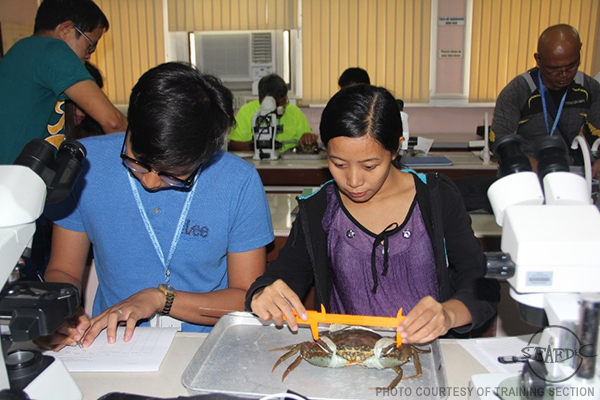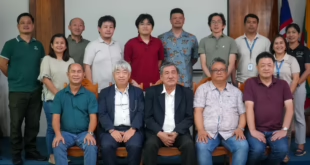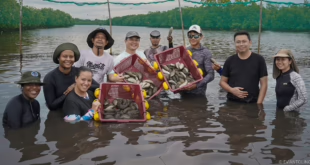By Development Communication Section

TIGBAUAN, Iloilo – Due to the growing popularity of mangrove crab as an aquaculture commodity, the Southeast Asian Fisheries Development Center/Aquaculture Department (SEAFDEC/AQD) conducted several training courses on various aspects of mangrove crab culture.
In a span of two months, SEAFDEC/AQD already completed four training courses on mangrove crab alone. One course was on mangrove crab hatchery operations while there were three sessions for the course mangrove crab nursery and grow-out operations.
“We believe that mud crab is a widely sought commodity in the world today and even hailed as the food for the gods. Your 24-day training doesn’t mean that we have made an expert out of you overnight. But I would like to tell you that despite this short training, we have sent you out now as successful participants and SEAFDEC/AQD still stands at the threshold of helping you,” said Mr. Dan Baliao, chief of SEAFDEC/AQD, during the closing ceremony of the Mangrove Crab Hatchery Operations on 2 September 2019 held at Tigbauan, Iloilo from 5 p.m. to 7 p.m.
The Mangrove Crab Hatchery Operations is a 22-day training course with lectures and practical activities on crab biology, site selection, natural food production, hatchery operations, feeding management, and health management among others. On the other hand, the Mangrove Crab Nursery and Grow-out Operations is a 10-day training course with lectures and practical activities on crab biology, pond preparation, nursery operations, grow-out operations, feeding management, and health management among others.
There was a total of 67 trainees with 63 coming from the Philippines, three from Papua New Guinea, and one from India who participated in the training courses which were completed on 2 September, 16 September, 19 September, and 9 October 2019, respectively.
In the closing ceremony held on 8 October 2019 at Tigbauan, Iloilo from 5 p.m. to 7 p.m., Mr. Glenn Fajardo, a crab farm owner and participant of the training, gave his impression about the training course on behalf of his fellow trainees.
“This kind of training serves as an instrument or as a guide for those who experienced loss of investments because we don’t know anything. So through SEAFDEC/AQD, we call this our best friends guiding us, giving us advice and they promised us just a while ago that they will continue giving us pieces of advice going to our goal to be more productive especially in mangrove crab industry,” said Mr. Fajardo.
Moreover, Training Section head Mr. Caryl Vincent Genzola added that there were already nine batches of trainees for crab-related training alone from January to October 2019 and another upcoming training is scheduled in November 2019.

 SEAFDEC/AQD Southeast Asian Fisheries Development Center | Aquaculture Department
SEAFDEC/AQD Southeast Asian Fisheries Development Center | Aquaculture Department



